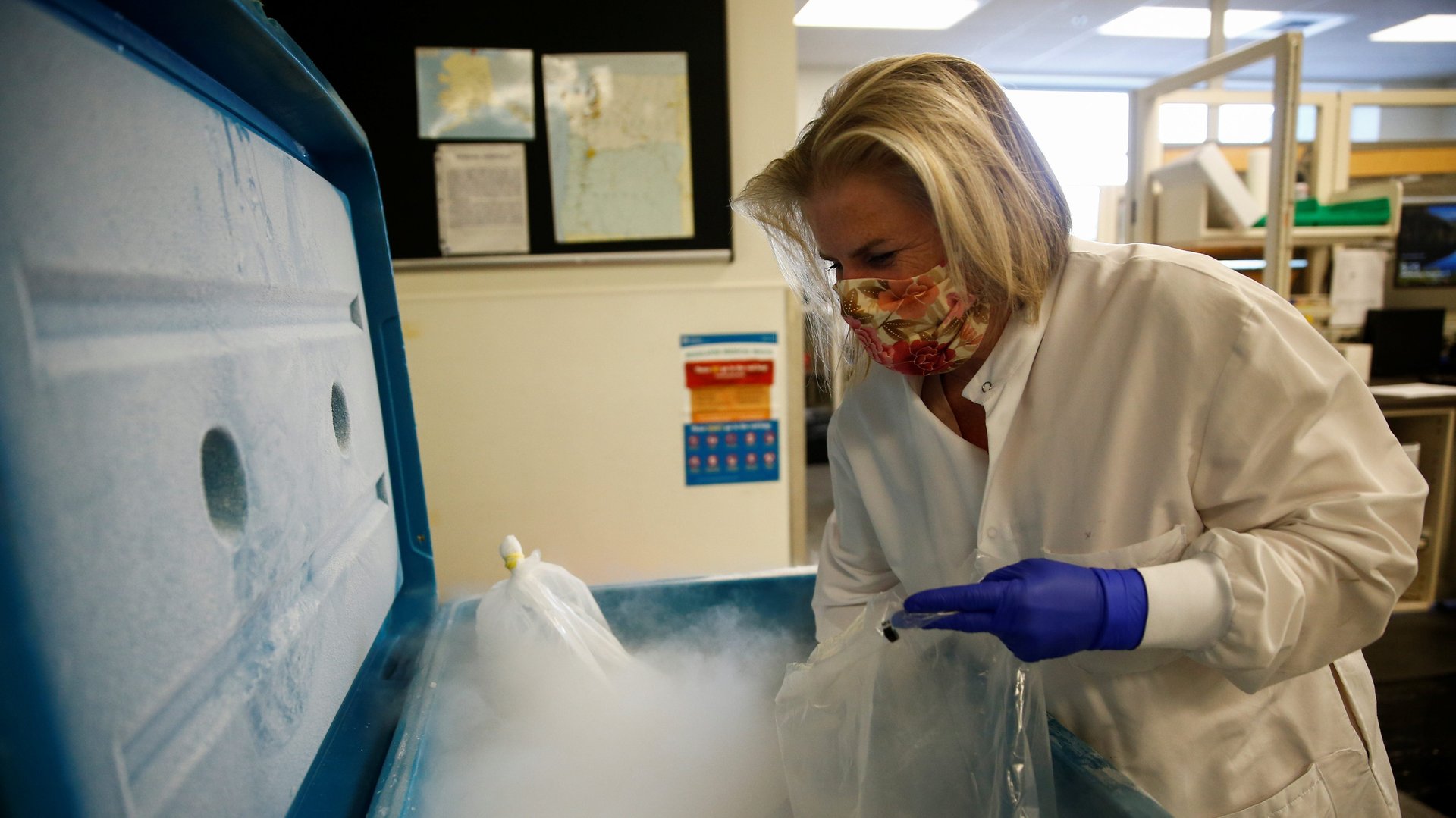US carbon dioxide supply is a bottleneck for Covid-19 vaccine distribution
Over the last few months, industries in the US have had to contend with a troublesome carbon dioxide shortage. From May to July, beer brewers and soda makers across the country were at a loss to source the fizzy stuff.


Over the last few months, industries in the US have had to contend with a troublesome carbon dioxide shortage. From May to July, beer brewers and soda makers across the country were at a loss to source the fizzy stuff.
But as summer turns to fall, a lack of CO2 could cause an even more problematic shortage: one of dry ice.
In early September, the New York Times reported that the US Centers for Disease Control and Prevention (CDC) expects that at least two Covid-19 vaccine candidates will require dry ice, the solid form of carbon dioxide, for transportation. In order to ship those vaccines, distributors will need to make sure industrial chemical plants can supply enough CO2 gas.
Dry ice is an ideal refrigeration tool for food and medical supplies: At ambient air pressure, it’s a chilly -79 °C (-110.2 °F). To make it, producers put purified CO2 gas under tremendous pressure.
It’s hard to come by huge quantities of pure carbon dioxide, though. It’s largely a byproduct of industrial chemicals like ammonia, ethylene oxide, and bioethanol—a slightly greener fuel created from corn. Plants that manufacture these products capture their excess carbon dioxide and sell it for use in other industries.
That’s how the CO2 supply got into trouble at the beginning of the pandemic. Of the three pipelines that generate relatively pure CO2, ethanol production fluctuates the most, depending on demand for gas. And in March, that demand plummeted as lockdowns went into place. In April, Reuters reported that 34 of the 45 ethanol plants in the US that sell CO2 to other industries had closed entirely or substantially cut their production.
“Suddenly people stopped driving, then there wasn’t a demand for gas, so there wasn’t a demand for ethanol, so then CO2 started drying up,” says Rich Gottwald, CEO of the Compressed Gas Association, a Virginia-based company that supplies a number of types of compressed gas to various industries. In the US, most petroleum gas used in cars contains some about 10% bioethanol, as is mandated by law.
In April and May, the CO2 shortage meant that the food and beverage industry had to adapt refrigeration tactics by doing things like swapping out solid nitrogen for dry ice—a technically challenging fix, due to nitrogen’s even lower freezing point. Some companies incurred higher costs as they shipped in CO2 from farther away.
Most regions have recovered as more people hit the road over the summer, although there still seems to be a shortage in the northeastern part of the country. In the Boston area, where a number of biotechnology companies and vaccine developers have labs, local dry ice suppliers still aren’t getting all the carbon dioxide they order. As of Sept. 9, the Massachusetts Institute of Technology reported an ongoing shortage.
Despite the CDC’s request to states to have vaccine distribution plans in place by the end of October, a vaccine will not be ready for wide-scale distribution at that point. But the deadline is an opportunity to identify and address all the supply chain bottlenecks that could disrupt a national rollout. Both vaccine candidates identified in the CDC’s distributed materials would require dry ice to keep the shots stable; a spokesperson for Pfizer, one of the drug companies in late-stage clinical trials for its vaccine, confirmed to Quartz that its custom thermal shippers will use dry ice to keep its vaccine candidate at -70°C.
Gottwald says that he’s confident that meeting these carbon dioxide needs won’t be a problem by the time vaccines are ready—even with some spotty shortages of carbon dioxide still rectifying themselves from the early days of the pandemic. “Our members will make sure that vaccine production and storage gets a priority,” he says. If they do, it’s pretty smooth sailing: Once CO2 supply bounces back, it doesn’t take long to make dry ice.